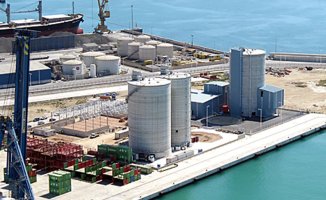The Cochin shipyards have taken seventeen years to have the first Indian-made aircraft carrier ready. The long wait has been worth it, according to Prime Minister Narendra Modi, who has presided over the commissioning of the 262-meter-long ship. "India has entered the list of countries that can build warships of this magnitude with indigenous technology," he has said.
The delay, however, has contributed to multiplying by six, to 2,500 million euros, the cost of the project. A figure, on the other hand, not far removed from what he paid, at the beginning of the century, for the acquisition from Russia, second-hand, of the Soviet-made aircraft carrier Baku. Although renamed Vikramaditya, it had been manufactured in the eighties in the Ukrainian shipyards of Nikolayev, today under Russian fire.
Its successor as the flagship of the Indian navy increases its deterrence capacity in the Arabian Sea and throughout the Indian Ocean, as well as in the Bay of Bengal, areas of the world where the presence of foreign warships has multiplied by three so far this century. The US, for example, with 11 aircraft carriers, has a huge base on the disputed island of Diego Garcia, while China, which has two aircraft carriers but is already building a third, is increasing its capabilities at a much faster rate than New Zealand. Delhi.
On the 75th anniversary of the independence of the Indian Union, Modi has taken the opportunity to retire the old insignia of the Indian Navy, removing the cross of Saint George inherited from the English flag. "It is a historic date, we have freed ourselves from a symbol of our servitude." In its place, a seal of the Marathi King Shivaji has been affixed.
India thus joins the exclusive club of countries capable of building an aircraft carrier - which also includes Spain - even though a quarter of its technology is foreign. In the absence of a contest for its air equipment, the Vikrant will share the air crew of the old Vikramaditiya, namely, Mig-29 fighters and Russian Kamov-31 helicopters, along with some units of Indian-made Tejas aircraft and MH60 multipurpose helicopters -R Americans.
Vikrant's commissioning comes just four months after the sixth and last of the Scorpène series submarines. These began to be built more than a decade and a half ago in the Bombay shipyards, at the hands of the French DCNS and the Spanish Navantia (later to the greña). In that case, modular construction was chosen, with the unpleasant surprise, initially, that the modules of the submarine did not fit. Navantia is also behind the TCG Anadolu, the Turkish-flagged amphibious assault ship, inspired by the Juan Carlos I, which should enter service in the coming months.
It must be said that, for the sake of its sovereignty, India is part of apparently contradictory groupings of nations. At this very moment, the Indian Navy is participating in the Vostok 22 war games, organized by Russia in Siberia and its Far East, as well as in the Sea of Japan, for fifty thousand soldiers also from China, Mongolia, Algeria, Syria, Nicaragua, Laos, Belarus, Armenia, Azerbaijan, Kazakhstan, Tajikistan and Kyrgyzstan.
On the other hand, India is part of QUAD, the maritime security group in the Indian Ocean, which also includes the US, Australia and Japan. Without forgetting that it is a founding member of the BRICS, where Russia, China, Brazil and South Africa are located and where Argentina aspires to join. As well as the Shanghai Cooperation Organization, articulated by China.
The INS Vikrant ("brave" in Sanskrit), takes its name from the first Indian aircraft carrier, which played an important role in the war for the liberation of Bangladesh, as a deterrent against Pakistan and its American and Chinese allies.
The port city of Cochin, for its part, was an important Portuguese colony under the reign of Philip II, III and IV, but its maritime tradition is even older, having served as a stopover between medieval China and Arabia.













